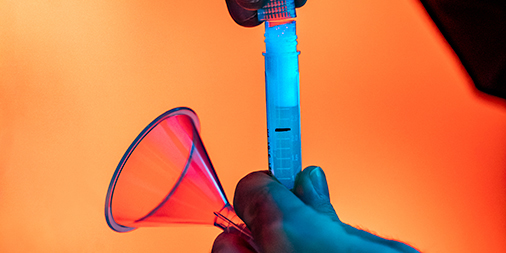You are here
 NIH-funded screening study builds case for frequent COVID-19 antigen testing Rapid antigen tests perform on par with lab tests when used every three days. National Institutes of Health (NIH)
NIH-funded screening study builds case for frequent COVID-19 antigen testing Rapid antigen tests perform on par with lab tests when used every three days. National Institutes of Health (NIH) Detecting SARS-CoV-2, the virus that causes COVID-19, improves with regularity of testing, whether using rapid antigen tests or PCR molecular tests. The PCR test is considered the gold standard for diagnosing COVID-19 infection, but cost and infrastructure issues, as well as wait times for PCR results, have limited its use more broadly as a screening tool for asymptomatic people because rapid results are needed to interrupt the chain of transmission.
In a highly anticipated study that compares rapid antigen and laboratory PCR approaches for COVID-19 serial screening, researchers affiliated with the National Institutes of Health’s Rapid Acceleration of Diagnostics (RADx) initiative reported results from 43 people infected with the virus.
They found that both testing methods were equally effective in detecting SARS-CoV-2 infection when tests were given on a regular cadence every three days. While individual PCR tests are more sensitive than antigen tests, particularly early in infection, the results showed that both testing approaches can give 98% sensitivity when taken regularly as part of a screening program.
Because antigen tests at the point of care or at home can deliver immediate results and are less costly than laboratory tests, these results suggest that they could be a highly effective screening tool to prevent disease outbreaks.
“Rapid antigen testing at home, two to three times per week, is a powerful and convenient way for individuals to screen for COVID-19 infection,” said Bruce Tromberg, Ph.D., director of the National Institute of Biomedical Imaging and Bioengineering (NIBIB), part of NIH.
“With schools and businesses reopening, an individual’s risk of infection can change from day to day. Serial antigen testing can help people manage this risk and quickly take action to prevent spread of the virus.” ...



Recent Comments